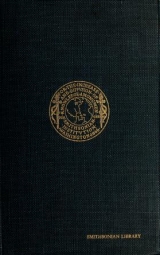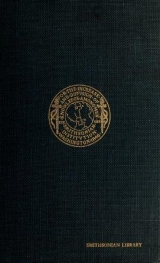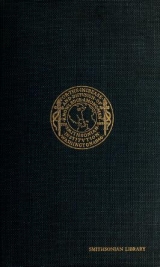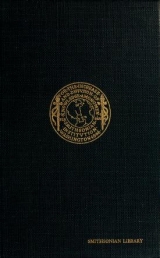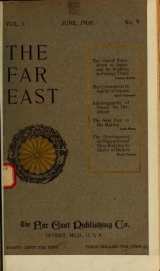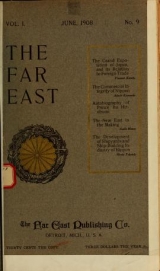The historic importance of Ternate lies in its role as premier trade entrepôt in the northern Moluccas -- the eastern Indonesian islands that were the historic source of the much-sought spices, clove and nutmeg.1 The clove (Syzygium aromaticum Kuntze) is indigenous only to this area; nutmeg (Myristica fragrans Hout) has been exported from the northern Moluccas throughout recorded history. Local languages still relate clove and nutmeg to their wild antecedents (see, e.g., Taylor 1990:69-70). Burkill (1966[1935]:1550) dates the introduction of nutmeg into Europe from the sixth century A.D. and also notes its apparent antiquity in southern Asia, where vocabularies throughout the region use the Sanskrit term for the spice. The antiquity of clove exportation from the northern Moluccas can clearly be traced to Roman times, for Pliny the Elder describes the clove in his writings of the first century A.D. (see Innes Miller 1969). The Ramayana, written about 200 B.C., also mentions cloves, and general references to unidentified spices occur in Egyptian, Chinese, Indian, and Mesopotamian sources. A recent archeological find suggests that the clove trade to the West may in fact have begun much earlier, for a single clove has been found among charred plant remains on the floor of a burned pantry room at the Mesopotamian site of Terqa, in present-day Syria, dated to 1700 B.C. (Buccellati and Buccellati 1983, cited in Taylor and Aragon 1991:304). Thus, the antiquity of trade is better documented in this region than in any other area of Indonesia. Until the sixteenth century, clove production remained indigenous to the northern Moluccan region. As van Fraassen (1981) notes, “cloves existed for the outside world long before the Moluccas did.” Traders -- from elsewhere in Indonesia for millenia, followed by other Asian traders, and then the Portuguese in 1512 -- followed the clove trail to its source in the northern Moluccas. Christopher Columbus, as has often been pointed out, was trying to reach the Ternate region by a roundabout route when he found America by mistake. From the sixteenth through the nineteenth centuries, as de Clercq's bibliography and historical notes suggest, Ternate formed the backdrop for attempts by Portuguese, Spanish, English, and the eventually successful Dutch to dominate the region and its valuable spice trade.
De Clercq's contemporaries recognized this book's unique contribution as a study of the Ternatese language, comprising word lists, grammatical notes, and inclusion of sample texts in Ternatese script. While today this may be admired as an example of giving voice to local histories rather than history from a colonial point of view, de Clercq's contemporaries valued his effort for other reasons. For example, Johan van Bemmelen's (1898) royally dedicated commemorative volume praising progress in the Netherlands Indies under Queen Emma (1890-1898) mainly commends de Clercq's Ternatese study for its role in filling out the classification of Dutch East Indies languages (1898:50-51). The Ternatese language (and its close neighbors) were clearly very different from other Indonesian languages. Van Bemmelen's assessment was influenced by earlier attempts, associated with the linguists Holle and Brandes, to classify eastern Indonesian languages into “western” and "eastern" divisions, each with further subdivisions. So by the 1890s the languages of Ternate, Tidore, and some of Halmahera were already recognized as a close grouping, one of four within Brandes's eastern-most group of the Eastern Indonesian languages. By providing clear evidence for the classification and description of Ternatese, concluded van Bemmelen, de Clercq had "importantly cleared up this fourth [group]," citing this book alongside other publications by van Baarda, van Dijken and Kern about related languages of Halmahera.
Researchers on the Ternatese sultanate (both now and in de Clercq's time), unlike researchers of the Ternatese language, can find much more historical information and documentary evidence beyond de Clercq's book. Here, after briefly summarizing the organization of de Clercq's book about the Ternatese sultanate, we can consider his presentation in light of some other more current questions about this sultanate and its significance. De Clercq's book begins by bringing the reader with him as he journeys through Ternate, describing both the town and the island. The author and reader then sojourn across the straits to Halmahera, then through the islands of Tidore, Makian, Moti, Mare, Kayoa, and on to Sula, Banggai, and other regions of the sultanate. He intersperses many kinds of ethnographic, linguistic, historic, and economic information throughout his text; collectively, his information about the Ternatese court, the sultanate, and its dependencies, are organized within this readable "travelogue" style throughout Part I. Particularly unique to this description are accounts of his personal interactions, as Resident, with the Ternatese sultan and other officials, giving us a snapshot of life in the Ternatese court and its dependencies, in the 1880s. Part II is quite different, as de Clercq reproduces a "Chronicle" of the history of Ternate and of Tidore, in part as his report of local understanding (as conveyed to him) of the sultanate's line of succession and of the region's history, and in part as his best attempt to summarize and correct prior publications on the topic. Part III, on the Ternatese language, consists of brief grammatical notes and three Ternatese texts with Dutch translations, along with a vocabulary of terms used in those texts. Those texts deal with the 1840 earthquake on Ternate, the 1879 installation of Sultan Ayanhar, and an 1844 speech by Sultan Mohamad Arsad. Finally, the appendices include important source information for regional history and for comparative studies by historians, art historians and textile specialists, anthropologists, linguists, and others; these include a list of rulers and of Ternatese titles (still used in many other areas of the Moluccas), a description of the funeral of Sultan Rajalaut (1751), and a description with drawings of the ceremonial flags of Ternate and Tidore.
In this narrative, then, de Clercq sees the personages and overall court culture of the Ternate sultanate as selectively and creatively adjusting, over time, to a large number of external influences from European powers. He recognizes his own role as the latest in a series of representatives for whom these adjustments are creatively being made. On occasion, he even conscientiously holds up his portion of the on-going colonial enterprise for his own, and the reader's, examination.
--exerpted from the Introduction to the 2001 Digital Edition by Paul Michael Taylor





